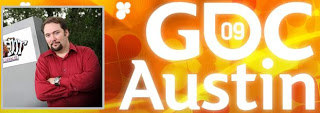Most people suck at Brainstorming. Most companies suck at Brainstorming. Through experience and study I have collected a set of ideas/methods that will teach you how to Brainstorm Effectively.
Brainstorming is the process of thinking up new ideas for a challenging problem or question. Usually, the problem has already been considered for some time, but the answer is not obvious, or is out of bounds of some constraints.
Effectiveness in Brainstorming means that the number of ideas generated were high, and that at least one idea was selected as a good one, and that when implemented, the idea worked to solve the problem/question.
Here’s my collection of ideas for how to Brainstorm effectively:
- Choose a Diverse group with as many Experts as possible to help you Brainstorm. People with Diverse backgrounds, diverse life experiences, and from diverse cultures will bring more unique ideas. Experts are people with 10,000 hours of experience in their field. In business, at least one person with Marketing Expertise, and at least one person with Engineering Expertise is ideal.
- Get in the right frame of mind: Have everyone on the team do something to try to get them into a creative frame of mind. Stretch, go to a fun location, play a game, think like you are a kid… something. BRAINSTORMING IS SUPPOSED TO BE FUN!!! (Fun unleashes creativity).
- First ask everyone to Brainstorm Individually. Have them write at least 3 ideas and send it to you.
- Now schedule a meeting (at least 2 hours, 3 hours is ideal; and have it span a lunch hour). Plan to bring in food or go out as a group. [this downtime is essential to the creative process]
- Open the meeting with “THE BRAINSTORMING RULES”… (write them on the wall)
- You MAY NOT Criticize ideas or even say “I like that”… save all comments till the end of the Brainstorming. WRITE: “No Criticism”
- However, you CAN AND SHOULD build on ideas that others have put forth. Write: “Build on Ideas”
- You SHOULD say many ideas, no matter how crazy. Write: “Quantity and Crazy Desired”
- Keep it “light” and Fun! Write: “Make it Fun”
- Start Phase 1 (out of two):
- Write some of the ideas that people had individually on the board.
- For 30min to 1hr… ask the group to throw out ideas… and write them on the board. If people get stuck, ask the question differently, or ask about a sub-part of the question… don’t give up after just a few minutes.. force the team to give ideas for the full time.
- Break for lunch… [eat as a group]
- Resume the Brainstorm for an additional 30min to 1hr. (because of the break, there is likely to be another burst of good ideas!).
- If the board gets filled… take a picture and clear some space and keep going.
- Finish now with Phase 2:
- Ask the team to vote for their favorite ideas… let them pick three, put a * next to the idea for every vote cast. During this phase, ENCOURAGE DISCUSSION about the ideas (but not about ‘who gave what idea’). Remind the team that its not about ‘who’s idea is better’… only than that ‘we’ got to a good idea.
- Now look at the board… what is the best answer? Is it feasible? If not, why? Either brainstorm on how to make it feasible, or see if the 2nd best idea is better in light of considering Feasibility.



